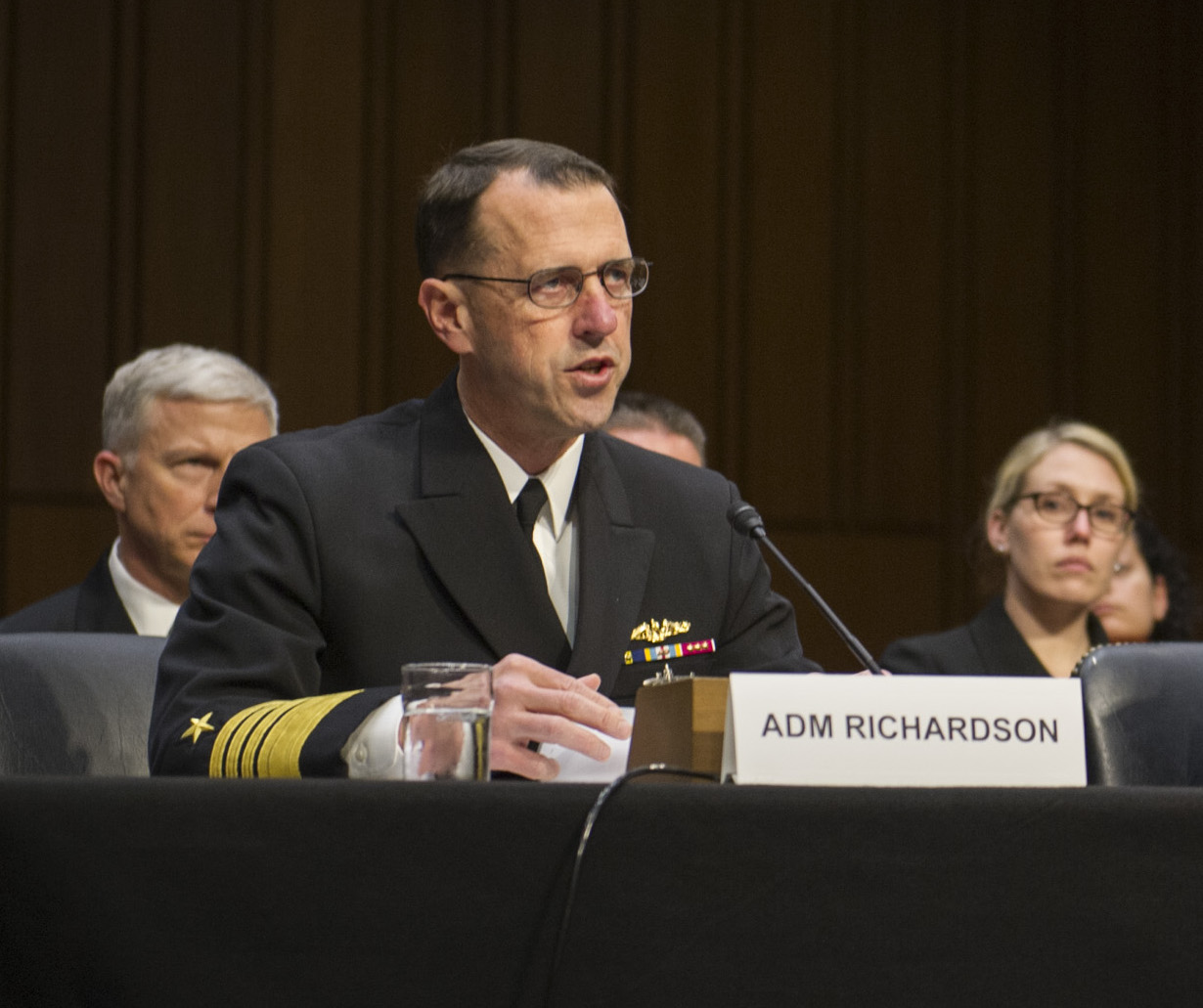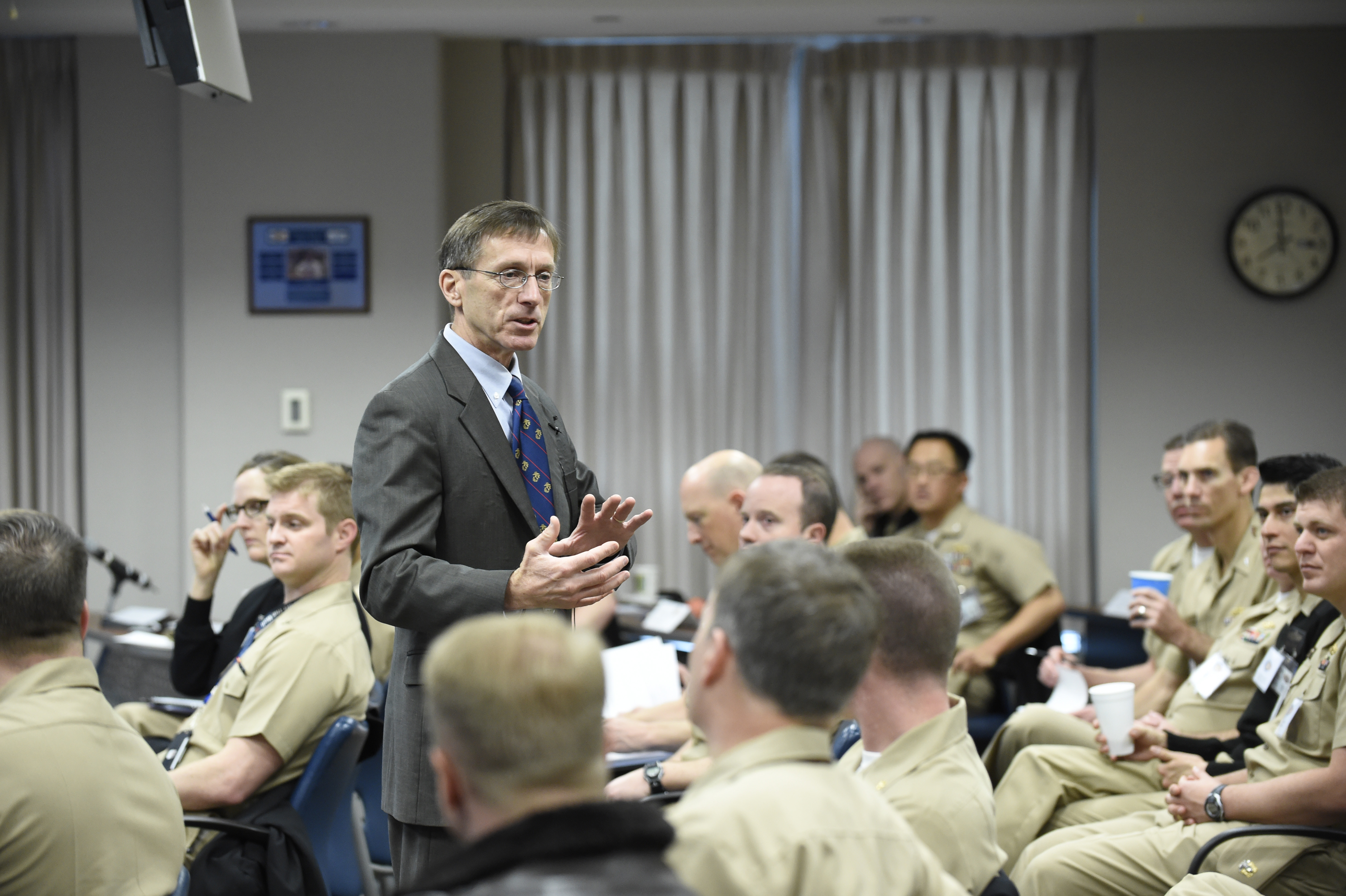
WASHINGTON, D.C. – Navy and Marine Corps leadership issued full-voiced warnings against extending a continuing resolution funding measure and implored Congress to pass a Fiscal Year 2017 budget with an additional supplemental funding package to shore up readiness shortfalls in the services.
Chief of Naval Operations Adm. John Richardson and Commandant of the Marine Corps Gen. Robert Neller joined the Army and Air Force chiefs before the House Armed Services Committee to outline the damage a new CR could do to the military’s ability to operate in a world where potential adversaries like China and Russia increase the size and capabilities of their own military forces.
“While we talk about whether to keep ships in port and aircraft on the ground, our competitors are making steady progress, and they are gaining on us,” Richardson said in opening remarks to the panel.
“America’s risks are growing as other nations expand and operate their fleets in the Pacific, Atlantic, Indian and Arctic Oceans, as they extend their influence over trade routes that are lifeblood of the international economy – including ours.”
The House passed a $578-billion bill for FY 2017 that is awaiting a vote in the Senate. The Trump administration also called for $30 billion in supplemental funding to shore up gaps in readiness, but neither the House nor the Senate has moved to pass the supplemental.
The service chiefs were unified in imploring Congress to move both the funding bill and supplemental faster.
“Failure to pass the budget, in my view as an American citizen and the chief of staff of the United States Army, constitutes professional malpractice,” Gen. Mark Milley told the HASC.
In more detail, if the CR is extended, Richardson told the panel that the Navy would have to cancel 14 ship repair availabilities, pull the afloat forward staging base USS Ponce (AFSB(I)-15) from operations in the Middle East, cut 41,000 hours of flight training time, and stop five cruiser deployments.
If the full FY 2017 Defense Budget and the supplemental were both passed, the service would be funded to complete a destroyer that was partially funded in FY 2016, and could avoid delaying the construction of the carrier Enterprise (CVN-80).
“We’ll keep on track LHA-8, the T-AO(X) program. We’ll complete a destroyer and four LCSs, LPD and other expeditionary ships. The list goes on and on. This is what we can do if we pass this budget and the supplemental. What a list that is, and this is just the Navy,” Richardson said.
“You flip that coin, its other side, and all those things won’t get done, and that divot will be felt for decades in the United States Navy.”
Neller told the panel that an increase in Marine Corps end strength to 185,000 would stall under a full-year CR. Additionally, the service would delay the start of needed modernization programs like the CH-53K heavy lift helicopter program, the Marines’ purchase of the Joint Light Tactical Vehicle and the F-35B Lighting II Joint Strike Fighter. The extended CR will also cancel training exercises and worsen the service’s aviation readiness problems.
The services have been sensitive in recent weeks to publicly discuss the readiness levels and the need for funds based on direction from Secretary of Defense James Mattis.
Several sources confirmed to USNI News Mattis had issued directives to the service to keep specifics of readiness issues out of the public domain – in part for fear of adversaries using the material condition of specific units against U.S. forces.
HASC chairman Rep. Mac Thornberry (R-Texas) told USNI News following the hearing that his committee was attempting to balance readiness sensitivities with the need for a public discussion of the ongoing problem.
“Everybody is very forthcoming in a classified session, and I respect the necessity of not advertising our problems to the world and all of our adversaries out there. At the same time, if we’re going to fix a problem, we have to understand that there is a problem and the extent of it,” Thornberry said.
“So I admit it’s a balance. I think they are reluctant to talk to candidly about the details, so we have to walk that fine line together about how much we can say in public… What they are not and should not be explicit about is ‘Ok, if we were asked to go do such-and-such we couldn’t do it,’ or ‘we could do it but it would take a longer time, or we would take higher casualties’.”

Acting Secretary of the Navy Sean Stackley, speaking separately at the Navy League’s 2017 Sea-Air-Space exposition, said the ongoing budget stalemate is holding back necessary modernization, training and exercising.
The cycle of continuing resolutions covering large amounts of time in a fiscal year “has flowed since the Budget Control Act of 2011,” meaning fewer funds to rebuild or put “planes in the sky, ships to the sea.”
Stackley said the Navy “is intent on holding its gains” in rebuilding the fleet from 274 ships to 300 and restoring readiness after more than a decade of war, which took its toll on ships and aircraft, stressed weapons stockpiles, and wore out sailors, Marines and their families.
The challenge will be reaching a fleet size of 355 ships without predictable and steady funding.
“We need to re-do the cost of doing business,” inside the Navy, the acting secretary said. The idea is to “drive unnecessary cost and time out of the equation.” He challenged the defense industrial base to do likewise and remain competitive with other nations.
Stackley cited the Doolittle air raid 75 years ago as an example of how the U.S. took an old idea and reworked it, redesigning equipment – in this case, land-based B-25 bombers – and training crews to take off from a 450-foot aircraft carrier deck to shatter a myth that Japan could never be attacked.
“They caught the defenders by surprise” and led the Japanese to try to extend their island empire, which ended in a crushing defeat at Midway.
All this planning, redesigning, reworking and training for the raid was done in a matter of months, not years, he said.
“Warfighters regularly pull that off today” to meet constantly changing mission, but the question is could the government and industry make such rapid changes, Stackley asked.





